
TRUCKING EMISSIONS
Maximum Overdrive: The Threat of Commercial Trucking Emissions
The construction of the Interstate Highway System, which began in 1956, ushered the United States into an era of unchecked automobile expansion. Products and goods once transported via railway were now able to be moved from place to place by semi-truck trailers. This revolution in transportation methods allowed industries to exert far greater control over the dissemination of their products. People living in towns far from traditional transportation hubs were now connected by the highway system, and companies were able to distribute a greater variety of products to different locales. As the cost of transporting these goods shrunk, the amount of commercial transportation naturally increased, and today it is estimated that over 15.5 million commercial trucks are currently operating on U.S. roadways.

Today, with the world finally coming to terms with the threat of global climate change, people are searching for ways to limit the emission of greenhouse gases. The overwhelming majority of these emissions are produced by automobiles and their internal combustion engines. Simply put, the burning of gasoline and the emission of carbon dioxide into the atmosphere is threatening the environment on an unimaginable scale. As regulations begin to take effect to curb automobile emissions, semi-trucks roll onward, burning fuel at unprecedented levels. The number of trucks used in commercial transportation (both single unit and tractor trailer combination) rose 37 % between 1980 and 2002, increasing from 5.8 million to 7.9 million. In a world increasingly concerned about fuel consumption, the trucking industry accounts for 12.8% of all the fuel purchased in the U.S.
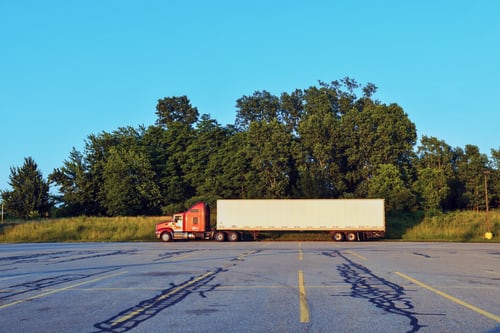
The problem, however, is not that trucks are transporting goods; it is that they are doing so in an extremely inefficient fashion. While automobile companies are increasingly focused on fuel efficiency, the average semi-truck trailer traversing American roadways today gets a meager 6 miles to the gallon. Consider that number, 6 miles per gallon, for a moment. In a country like the United States, where 80 % of communities receive their goods exclusively by truck, this is simply unacceptable. When combined with the recent rise in fuel costs, which leads directly to a rise in the cost of goods shipped by truck, our reliance on the trucking industry is putting a strain on both the economy and the environment.

Big rig semi-truck trailers are by far the leading contributor to U.S. emission levels. Measured in emissions per ton-mile, domestic freight movement has become increasingly CO2 intensive since 1990, in contrast to passenger sources, which have produced fewer CO2 emissions per passenger mile. This means that the trucking industry is consuming more fuel than any other, while simultaneously burning that fuel with the least efficiency. While regulations targeting automobile emissions are beginning to take effect, their benefits are being canceled out by the increase in semi-truck transportation. The North American Free Trade Agreement (NAFTA) recently provided the Bush administration with a legal basis to allow millions of trucks to enter the U.S. from Mexico to deliver goods. These trucks are not required by law to conform to U.S. emissions standards, effectively counteracting any emissions reductions influenced by new regulations. In fact, the NAFTA/Mexican Truck Emissions Overview conducted in late 2004 revealed that “66% of the Mexican truck fleet is 1993 model year and older (1993 was when the diesel engine fleet was close to 100% electronic conversion, which means that engines built in 1993 and later typically use electronic fuel injection and computer controls to reduce emissions, improve performance and fuel economy).” Even more alarming is the overview’s assessment that “25% of the Mexican truck fleet is pre 1980 model year, running on engines which emit very high levels of Nitrogen Oxide (NOx) and Particulate Matter (PM) emissions on average.” These figures clearly suggest that our country is literally curbing emissions with one hand and increasing them with another, while the planet continues to suffer the consequences of global climate change.
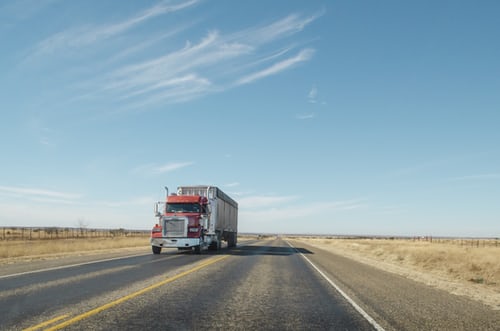
While the outlook is admittedly bleak, there has been an increased awareness on the part of the federal government in regards to trucking emissions. The Environmental Protection Agency has adopted strict new emission standards for on-road heavy-duty vehicles that took effect beginning in 2007. Under these new standards, both Nitrogen Oxide and Particulate Matter emissions must be ten times lower than 2004 levels, and the 2007 standards represent a 25-fold reduction compared to emission standards in the early 1990’s. The ATA (American Trucking Association) has even implemented the ‘Green Truck’ program, which is a voluntary avenue for truckers to learn about emissions standards, retrofit their equipment for increased efficiency, and explore alternative fueling options. However, one pressing question remains: are these efforts enough?
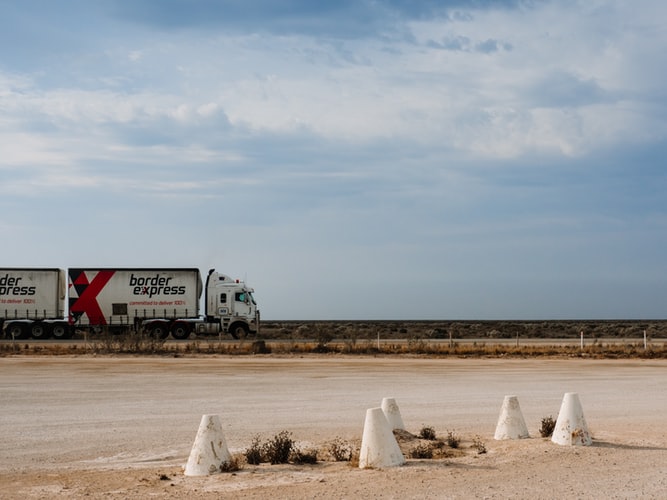
Consider that the emission standard improvements described above apply only to new vehicles in the year of their manufacture. There are currently no emission standards that apply to in-use vehicles, other than some state regulations on exhaust smoke opacity. Previously manufactured semi-trucks pose the greatest concern because they rely on outdated technology and are even less fuel-efficient than their modern counterparts. Astoundingly, older trucks produced during the 80’s and 90’s get only 4 miles to the gallon, while burning diesel fuel that pollutes the atmosphere in greater concentrations than regular gasoline. For an industry that averages 250 miles per trucking trip, 4 miles of transport for every gallon burned is dangerously irresponsible.

Other trucking industry practices also add to the air pollution epidemic, particularly the fact that drivers are encouraged by trucking companies to leave their rigs idling overnight for heating or cooling purposes. Drivers consider their trucks to be their homes during extended long-haul trips, and idling allows them to maintain a comfortable environment when not driving. Despite increased efforts to reduce idling times and their unnecessary emissions the habit has become engrained in trucking culture and change has been slow in coming. Although the trucking industry is vital to the national economy, a stubborn refusal to adapt technologically has left it trailing far behind other producers of harmful emissions when it comes to addressing global climate change. Today it is clear that trucking is one of the leading contributors to our current environmental crisis. Industry-wide reforms must be undertaken immediately to reduce trucking emissions across the nation.

Sources: All statistics provided by the U.S. government’s Guide to Foreign Trade Statistics, the California Environmental Protection Agency’s Air Resources Board and the Energy Information Administration.
URL: http://www.usatradeonline.gov/usatrade.nsf/vwRef/GuideTo
URL: http://www.arb.ca.gov/enf/hdvip/bip/naftamextrk.pdf
Written By: Jonathan Zaun
Initiated & Edited by Thomas Thirion
On Behalf Of: Green Peace Corps

SHIPPING EMISSIONS
Troubled Waters and Darkened Skies: Oceanic Shipping Emissions
As industries around the world struggle to cope with the growing energy crisis, oceanic shipping is becoming an increasingly attractive option. The cost of transporting goods from the point of production to the point of consumption represents a growing cost for companies of every kind. In response to shrinking profit margins, industries have begun to shift transportation methods from railways and semi-trucks to ships. These ships are more cost-effective for companies as they allow more goods to be transported at a given time. In 2002 there were 150 million metric tons of goods shipped into U.S ports from foreign countries. Today that number has risen to nearly 250 million metric tons, an increase of over 65%. As newly enacted regulations clamp down on automobile and trucking emissions, this trend will surely continue.
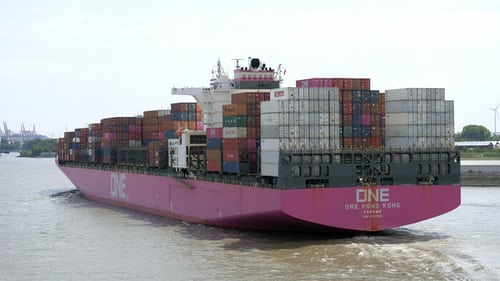
While this conversion may be profitable for various industrial interests, it has come at the expense of the environment. Cargo ships release between 1.2 and 1.6 million tons of airborne particles each year, mostly from the burning of shipping fuel. These include various carbon particles, sulfur and nitrogen oxides which contribute to the greenhouse effect and global climate change. Tankers, cruise liners and cargo ships are estimated to generate almost 30% of the world’s smog-forming nitrogen oxide emissions and nearly 10% of SO2 emissions from burning fossil fuels.
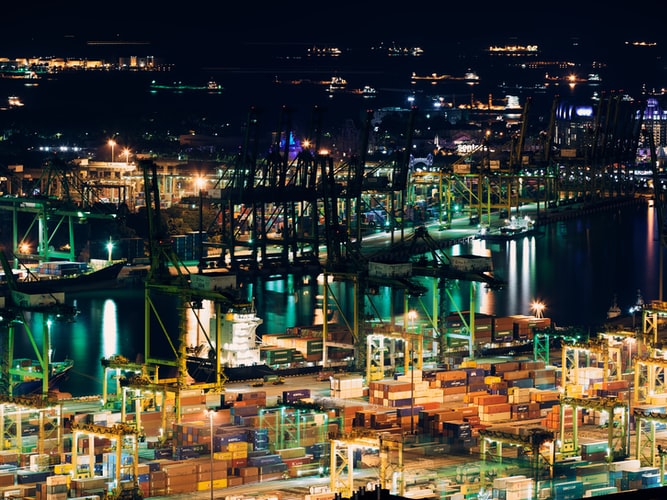
The planet currently has 90,000 tankers, container ships and cruise ships traversing its waterways. These ships were responsible for 5-6% of the world’s greenhouse gases emissions in 2006. While this figure might seem insignificant, consider that shipping pollution is equal to the amount generated by 220-330 million cars, double the amount released by all of Canada, and 75-100% more than the aviation industry. Even more disconcerting is the growing trend by industrialized nations to utilize oceanic shipping. The United States alone is expected to double the amount of shipping traffic in and out of its ports by the year 2020. While the American people are increasingly adopting “Green” practices, U.S. industries are moving in the opposite direction in the name of profit, shipping more and more of their goods via oceanic transport.

Unfortunately, the environment is not the only victim. Some estimates have indicated that shipping pollution is responsible for 60,000 deaths worldwide each year. More than 1 in 10 children has been diagnosed with asthma and related lung problems in the world’s biggest port cities. The main culprit is a little known substance called bunker fuel. Oceanic shipping requires the burning of bunker fuel, which has the consistency of mud and contains sulfur levels 3,000 times that of gasoline. Bunker fuel is thought to generate 15-30% of the world’s smog-forming emissions and is 1,000 times dirtier than highway diesel used by trucks and buses.
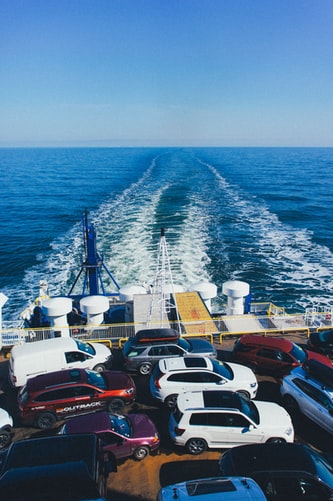
One might suppose that increased awareness towards air pollution might dissuade ships from this practice, but sadly, that is not the case. In fact, despite the emissions regulations enacted on motor vehicles during the last 35 years, 2008 marks the first year of any emissions controls on the shipping industry. Even more shocking is the federal government’s seeming apathy toward the problem of shipping pollution. Disregarding an international consensus on the dangers of shipping pollution, Congress has failed to approve a European treaty set to take effect in 2009 which will curb shipping emissions. This means that while the rest of the world is acting, albeit slowly, to confront this looming crisis, our own government refuses to do join the effort. As a result, environmental officials have estimated that in 25 years, marine vessels will account for nearly half the total of U.S. smog-forming pollution.

The import of these statistics is clear. While America has begun opening its eyes to the threat of global climate change, our government is engaging in counterproductive practices. Simply put, we are taking one step forward while taking two steps back. While we are targeting the pollution produced by automobiles, little to nothing is being done in regards to oceanic shipping pollution. This is troubling news to say the least, and calls into question the commitment of our own government to truly address worldwide air pollution.
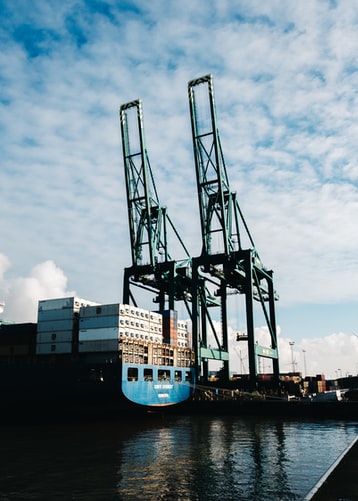
Sources: All statistics provided by the U.S. government’s Guide to Foreign Trade Statistics and the Energy Information Administration.
URL: http://www.usatradeonline.gov/usatrade.nsf/vwRef/GuideTo
Written by: Jonathan Zaun
Initiated & Edited by Thomas Thirion
On Behalf Of: Green Peace Corps

AVIATION EMISSIONS
Unfriendly Skies: The Threat of Aviation Industry Emissions
In a world increasingly focused on alternative energy sources, emissions standards, climate change, and other pressing environmental issues, sometimes it can be easy to overlook smaller problems while trying to tackle the big ones. In the struggle against global warming, much of the focus is constrained to automobiles and their emission of greenhouse gases. Transportation, along with the production of electric energy, is responsible for the largest share of harmful emissions into the world’s atmosphere. There are other sources of greenhouse emissions, however, which greatly exacerbate the problem simply because they are not addressed properly. The aviation industry, both passenger and cargo flights, is responsible for 7% of world’s greenhouse gas emissions, a number which is expected to double as increasingly strict standards begin to affect the automobile industry. Despite these facts, the aviation industry is often left unchecked during the application of new emissions standards, and even successfully fended off international efforts to include their emissions in the Kyoto Protocol a decade ago. Aviation emissions have historically been exempted from U.S. and International emissions control plans. To demonstrate its full commitment to the issues of global climate change and emissions control, the U.S. federal government must be willing to apply its newly strengthened standards to minor sources of dangerous emissions like the aviation industry.

Inaction on aviation emissions is especially disconcerting when it is considered that aircraft pollute at a higher per/passenger rate than any other form of transportation, emitting 191 grams of CO2 per passenger, while automobiles emit 143 grams of CO2 per passenger, and trains release 43 grams per passenger. Even more worrying, aviation greenhouse gas emissions have doubled since 1990 and are projected to further grow by 3.5% annually. The latest report of the U.N.’s Intergovernmental Panel on Climate Change estimates that aviation is responsible for from 2% to 8% of global warming. Perhaps the most alarming factor of aviation pollution is the scientific evidence suggesting that the effect of aviation emissions are between 2 and 4 times the impact of emissions occurring on the ground, due to their proximity to the planet’s atmosphere at the time of emission release. The import of this information is simple: Aviation pollution presents the planet with another, very real threat and it must be addressed if we are to prevent global climate change.

There has been some encouraging news concerning aviation pollution on the international scene, as the United Kingdom voted in 2008 to include, for the first time, aviation emissions in their country’s historic Climate Change Bill, which sets an ambitious goal of reducing the U.K.’s greenhouse gas emissions by 80%. Improvement on one side of the world, however, does not necessarily bode well for us here in America. The United States government and the Bush administration in particular has rejected and criticized the U.K. bill, arguing that a standardized international approach would be more effective than nationally imposed restrictions. This rejection is consistent with the outgoing administration’s policy of reckless disregard for the environment and refusal to adhere to accepted notions regarding climate change. In 2008, the United States consumed over 13 billion gallons of jet fuel, all of which were burned with minimal federal restriction on the emissions they produced. As we continue to mount a global defense against climate change and its consequences, we cannot afford to ignore seemingly minor threats like aviation emissions. We must devote ourselves to the totality of the effort if we are to succeed in changing the destructive habits of our species.

Sources: All statistics provided by the U.S. government’s Guide to Foreign Trade Statistics and the Energy Information Administration, and the Air transport Association.
URL: http://www.usatradeonline.gov/usatrade.nsf/vwRef/GuideTo
Written By: Jonathan Zaun
Initiated & edited by Thomas Thirion
On Behalf Of: Green Peace Corps

